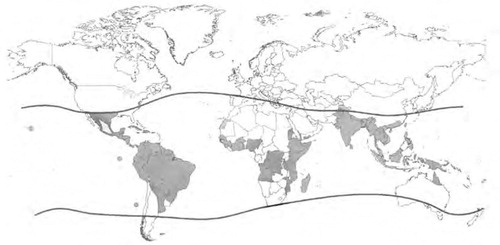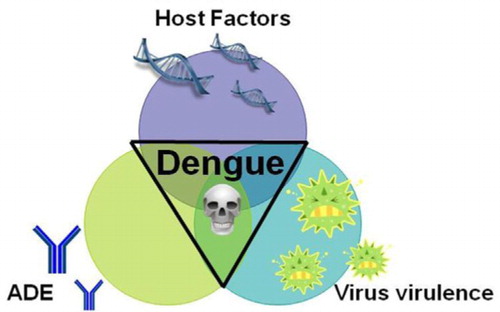Figures & data
Fig. 1 Dark-gray shading indicates countries/areas at risk of DENV transmission, 2008. The contour lines indicate the potential geographical limits of the northern and southern hemispheres for year-round survival of Ae. aegypti, the principal mosquito vector of DENVs. Reprinted by permission from WHO, Dengue: guidelines for diagnosis, treatment, prevention and control – New edition (2009), © 2009 (Citation6).

Fig. 2 The complex interplay of risk factors for severe dengue disease can be illustrated as a triangular interplay dominated by the three main risk factors: host factors, preexisting DENV-specific antibodies mediating antibody-dependent enhancement (ADE), and intrinsic virus features influencing strain virulence. The exact contribution of each risk factor may vary from case to case.
